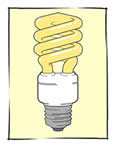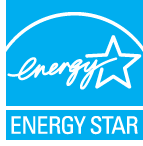Saving energy saves money. Reducing your energy use will reduce your gas and electricity bills (which frees up funds for other, more meaningful things). It also benefits the environment and your health in a variety of ways. For example, using less electricity reduces power plant emissions from burning fossil fuels, which reduces air and water pollution, and that helps protect everyone’s health and our shared natural resources. It also reduces the emission of greenhouse gases that are contributing to climate change.
 This checklist outlines a number of ways that you can conserve energy at home (or at work), by changing your household (or workplace) products and practices related to Heating and Cooling, Appliances and Equipment, Lighting, etc. Most of these strategies are easy and low- or no-cost, and saving energy helps save you money down the road.
This checklist outlines a number of ways that you can conserve energy at home (or at work), by changing your household (or workplace) products and practices related to Heating and Cooling, Appliances and Equipment, Lighting, etc. Most of these strategies are easy and low- or no-cost, and saving energy helps save you money down the road.
HEATING AND COOLING
- Program/adjust your thermostat to provide less heating or cooling at night and during the daytime hours when your home/building is not occupied. If you don’t know how to change the settings on your programmable thermostat, read the manual or ask someone for assistance.
- On hot and sunny days, cover your windows by closing the shades, blinds, opaque curtains, or shutters; and turn off any lights that aren’t needed (especially any lamps that are using conventional incandescent bulbs, as they emit a surprising amount of heat). Avoid running the oven, stove, dishwasher, or washing machine (or opening the refrigerator a lot) on hot days, and especially during the hottest hours of the day. And if you live in an area that regularly has hot summers, consider adding shade trees, awnings, or overhangs (particularly outside of west-facing windows) and putting a light-colored roof on your home when it’s time to replace the roof (and a light-colored driveway material if you need to repave your driveway).
- Avoid or minimize your use of air conditioning, when possible. Air conditioners use a lot of energy, making them expensive to use. In warm weather, try using ceiling fans, floor fans, or a “whole house” attic fan (or in dry regions, an evaporative “swamp” cooler) instead of AC. On cool nights, open the windows to let the cool air in, and then close the windows by 9 AM to keep the cool air inside. These options can often provide adequate cooling.
- Follow the recommended maintenance procedures for your heating and cooling systems. Replace or clean air filters as specified in the owner’s manuals. Have your furnace or air conditioner serviced if it isn’t operating properly or efficiently.
- Keep your heating/cooling vents dusted.
- Keep furniture, curtains, and other objects away from heater/air conditioning outlets, to allow conditioned air to flow freely into the room.
- Make sure your windows close properly. Fix any broken window panes, seals, or latches.
- Don’t leave the heat or air conditioning on if you open a window.
- Weatherize your doors and windows by using weather stripping or seals to minimize air leaks and drafts.
- Make sure your home is well insulated. Insulate your hot water pipes and water heater, and add insulation (if needed) to your attic, walls, or basement.
- Hire a home performance contractor to do a home energy audit; they will inspect your home and identify any inefficiencies and seal up air leaks. In many homes, fixing air leaks can save more energy and money than installing a high-efficiency furnace. (One very experienced company that offers these services in California is Advanced Home Energy, formerly called Recurve.) You can search here for a contractor near you who has been accredited by the Building Performance Institute. If you live in California, check out the information provided by Energy Upgrade California.
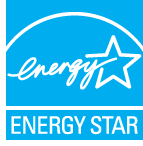 When purchasing a new furnace, air conditioner, ceiling fan, water heater, windows, or doors, choose products that have a high Energy Star efficiency rating. (For windows, at a minimum, make sure you choose double-paned glass.)
When purchasing a new furnace, air conditioner, ceiling fan, water heater, windows, or doors, choose products that have a high Energy Star efficiency rating. (For windows, at a minimum, make sure you choose double-paned glass.)
Please continue reading. The rest of this post includes tips on lighting, appliances, electronics, and more:

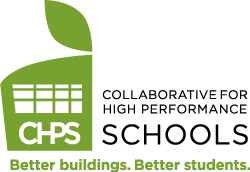
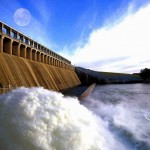 According to the U.S. EPA, if all U.S. households installed water-efficient fixtures and appliances, the country would save more than 3 trillion gallons of water and more than $18 billion dollars per year.
According to the U.S. EPA, if all U.S. households installed water-efficient fixtures and appliances, the country would save more than 3 trillion gallons of water and more than $18 billion dollars per year.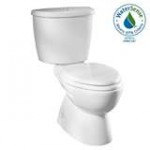 Toilets are often the source of the most water use (and water wasting) within a home, accounting for nearly 30 percent of an average home’s indoor water consumption. If you have a toilet(s) that uses more than 1.6 gallons of water per flush (gpf)—as do almost all toilets installed before 1994—replace it with one of the following:
Toilets are often the source of the most water use (and water wasting) within a home, accounting for nearly 30 percent of an average home’s indoor water consumption. If you have a toilet(s) that uses more than 1.6 gallons of water per flush (gpf)—as do almost all toilets installed before 1994—replace it with one of the following:
